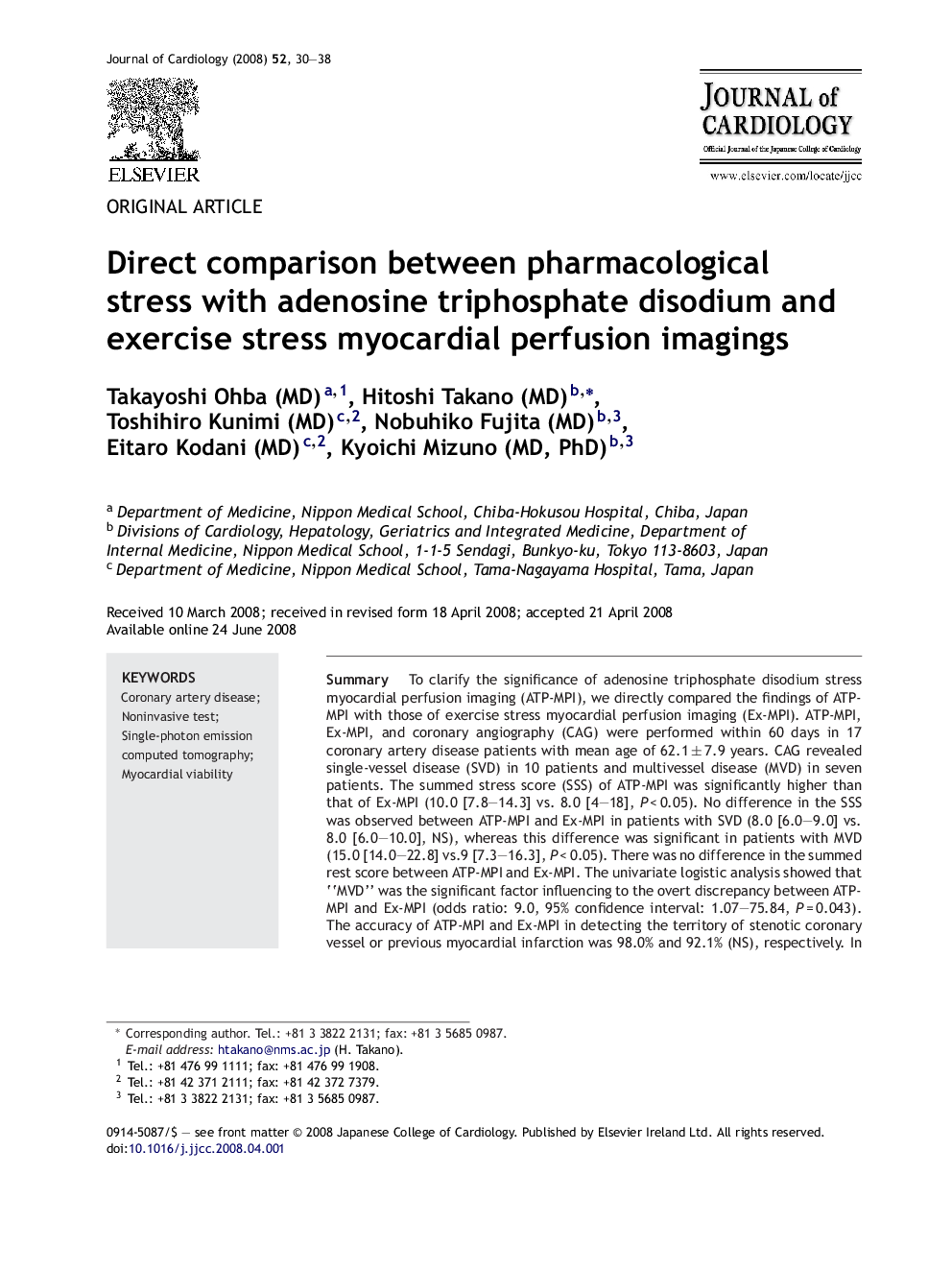| Article ID | Journal | Published Year | Pages | File Type |
|---|---|---|---|---|
| 2963805 | Journal of Cardiology | 2008 | 9 Pages |
SummaryTo clarify the significance of adenosine triphosphate disodium stress myocardial perfusion imaging (ATP-MPI), we directly compared the findings of ATP-MPI with those of exercise stress myocardial perfusion imaging (Ex-MPI). ATP-MPI, Ex-MPI, and coronary angiography (CAG) were performed within 60 days in 17 coronary artery disease patients with mean age of 62.1 ± 7.9 years. CAG revealed single-vessel disease (SVD) in 10 patients and multivessel disease (MVD) in seven patients. The summed stress score (SSS) of ATP-MPI was significantly higher than that of Ex-MPI (10.0 [7.8–14.3] vs. 8.0 [4–18], P < 0.05). No difference in the SSS was observed between ATP-MPI and Ex-MPI in patients with SVD (8.0 [6.0–9.0] vs. 8.0 [6.0–10.0], NS), whereas this difference was significant in patients with MVD (15.0 [14.0–22.8] vs.9 [7.3–16.3], P < 0.05). There was no difference in the summed rest score between ATP-MPI and Ex-MPI. The univariate logistic analysis showed that “MVD” was the significant factor influencing to the overt discrepancy between ATP-MPI and Ex-MPI (odds ratio: 9.0, 95% confidence interval: 1.07–75.84, P = 0.043). The accuracy of ATP-MPI and Ex-MPI in detecting the territory of stenotic coronary vessel or previous myocardial infarction was 98.0% and 92.1% (NS), respectively. In conclusion, ATP-MPI is useful for detecting potential ischemic areas that cannot be detected by Ex-MPI, particularly in patients with MVD.
